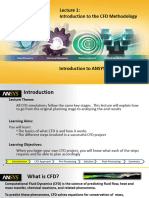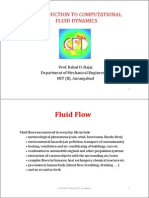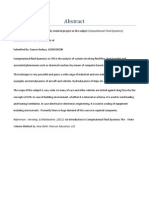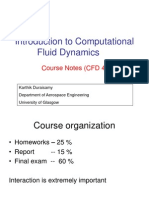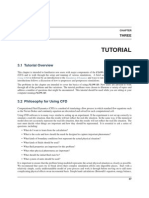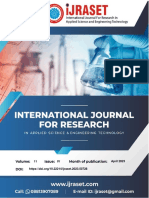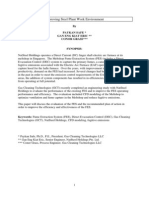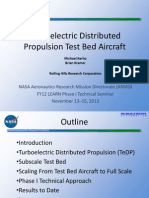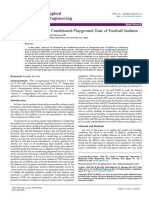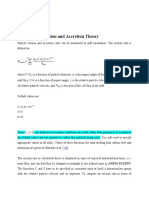0% found this document useful (0 votes)
18 views2 pagesCFD
Computational Fluid Dynamics (CFD) is a numerical method for analyzing fluid flow and heat transfer, utilizing fundamental equations like conservation of mass, momentum, and energy. The CFD process involves preprocessing (defining geometry and boundary conditions), solving (using numerical methods), and postprocessing (analyzing results). Common applications span various industries, including aerospace, automotive, and biomedical, with popular software tools like ANSYS Fluent and OpenFOAM.
Uploaded by
Harish KusaCopyright
© © All Rights Reserved
We take content rights seriously. If you suspect this is your content, claim it here.
Available Formats
Download as DOCX, PDF, TXT or read online on Scribd
0% found this document useful (0 votes)
18 views2 pagesCFD
Computational Fluid Dynamics (CFD) is a numerical method for analyzing fluid flow and heat transfer, utilizing fundamental equations like conservation of mass, momentum, and energy. The CFD process involves preprocessing (defining geometry and boundary conditions), solving (using numerical methods), and postprocessing (analyzing results). Common applications span various industries, including aerospace, automotive, and biomedical, with popular software tools like ANSYS Fluent and OpenFOAM.
Uploaded by
Harish KusaCopyright
© © All Rights Reserved
We take content rights seriously. If you suspect this is your content, claim it here.
Available Formats
Download as DOCX, PDF, TXT or read online on Scribd
/ 2







































